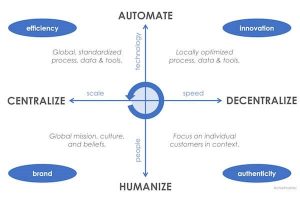While there are some industries in which individuals can succeed with a narrow skill-set, there are others where a diverse portfolio of attributes are required. Take the watch making industry, for example, where it is believed that operators are required to master a total of 32 techniques if they are to create a timepiece completely by hand.
Conversely, there are some industries that were once dominated by a single skill-set but now place far greater demands on those who work within them. Take blogging, for example, where it is no longer possible to succeed based solely on an innate ability to create engaging and well-written content. Instead, bloggers require a myriad of diverse skills if they are to succeed in the modern age, especially when you consider Google’s ongoing quest to enhance the online experience.
Goodbye Blogger, hello Influencer: What Skills do Bloggers need in 2016?
With this in mind, what are the core skills that distinguish successful bloggers in 2016? Here are some of the most prominent to keep in mind, whether you own a blog site or regularly guest post on high authority outlets: –
Visual Content and Photo Editing Skills
Given that commercial blogs and professional guest posts are usually cultivated to drive emotive calls to action, bloggers are increasingly being referred to as influencers. As such, it is imperative that they are able to collate images, videos and graphical icons alongside text to create the most compelling and engaging piece of content imaginable.
With image and media-rich content also likely to generate 94% more views than plain text alone, the need to learn a myriad of visual content skills has never been more pressing. You should start by learning basic photo editing skills, while paying particular attention to resizing and reformatting pictures to optimise their visual impact. On a similar note, you may also want to develop in-depth knowledge of image editing software outlets such as Adobe InDesign and Photoshop, as these outlets make it easy to edit a high volume of graphical items quickly and efficiently.
While incorporating videos and audio-visual media into your blog posts is actually easier than editing images in the modern age, you should strive to use either existing videos or upload your content directly to YouTube before embedding it on your site. This will hasten the loading times for individual blog posts and landing pages, creating an enjoyable reader experience while ensuring that the content can take centre stage.
The ability to strategise and manage content
Before the days of Google’s Panda and Penguin updates, bloggers were simply consumed with the idea of creating content in high volume. This was particularly true in the case of guest bloggers, who could build a large volume of back links in a very short and condensed period of time.
While a healthy quantity of publications remains important for blog-owners and guest posters, however, both must now showcase an ability to develop a content strategy and manage its execution over a prolonged period of time. There are many different elements included in this process, some of which are based on Google’s variable criteria for ranking pages. You must develop a strategy which prioritises longer and more in-depth pieces of content, for example, and while there is room for diversity it should be noted that blog posts in excess of 2,400 words are considered to be the optimal length in 2016.
Additionally, you should also prioritise regular (and scheduled) posting while also focusing on keyword density and the relevance of your content when creating a strategy with ranking algorithms in mind.
It is also crucial that you consider the experience of the reader when creating a viable content strategy, however, as Google is increasingly keen on promoting this as a key metric when ranking websites. The creation of high quality and perfectly executed content is central to this, as is the inclusion of fast-loading and high-resolution media throughout every single post. Regardless of your overall goals or individual calls to action, your strategy must produce content that engages readers and serves as an entry point into an on-going and mutually beneficial relationship.
An Affinity with social media and networking
This is arguably the most important aspect of your content management strategy, as the integration of your blog and social media is central to its long-term success. This can manifest itself in numerous ways, but the most important thing to remember is that you build a social community around your content and use this as a network through which to achieve your individual goals.
This instantly establishes your blog as a meld of thought leaders and actively engaged readers, rather than merely a platform from which to host paid and generic content.
As a minimum, you will need to have actionable social share buttons featured prominently on each blog page, as these enable readers to publish relevant pieces of content within their own networks. You must also share compelling blog posts as regularly and as tenaciously as possible, using engaging tag lines and introductions (particularly on high volume platforms such as Twitter). You must also not be afraid to target specific social media demographics with blog posts and share these accordingly, whether you leverage professional LinkedIn users or the predominantly female Pinterest audience.
On a final note, you should also consider moderating your blog posts and reader comments through the social platform, whether this is done using platforms such as Twitter or a separate Facebook plug-in. Either way, you will need a range of social media and networking skills if you are to successfully build a community around your content, especially if you hope to maintain this over time.
Digital & Social Articles on Business 2 Community(44)





